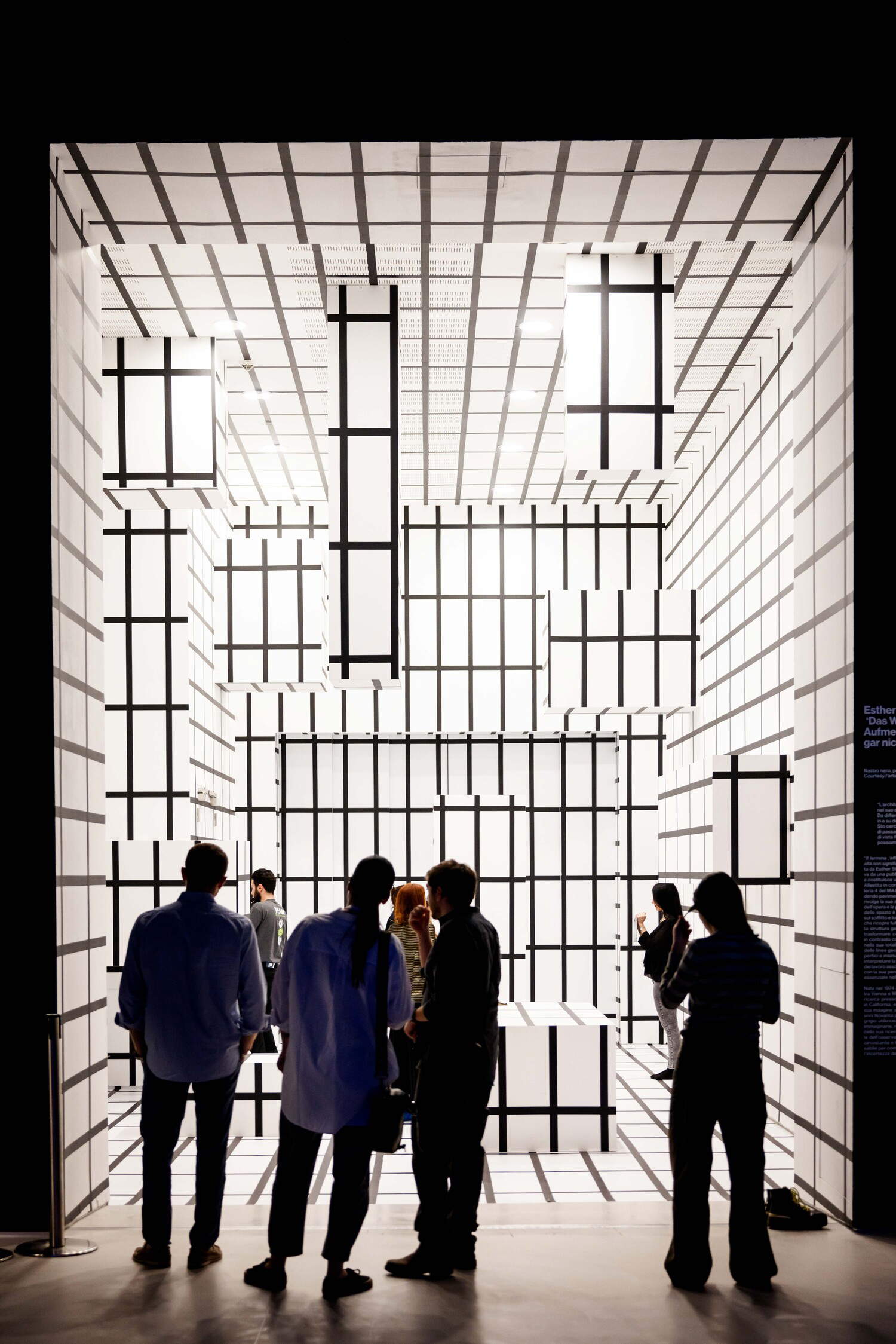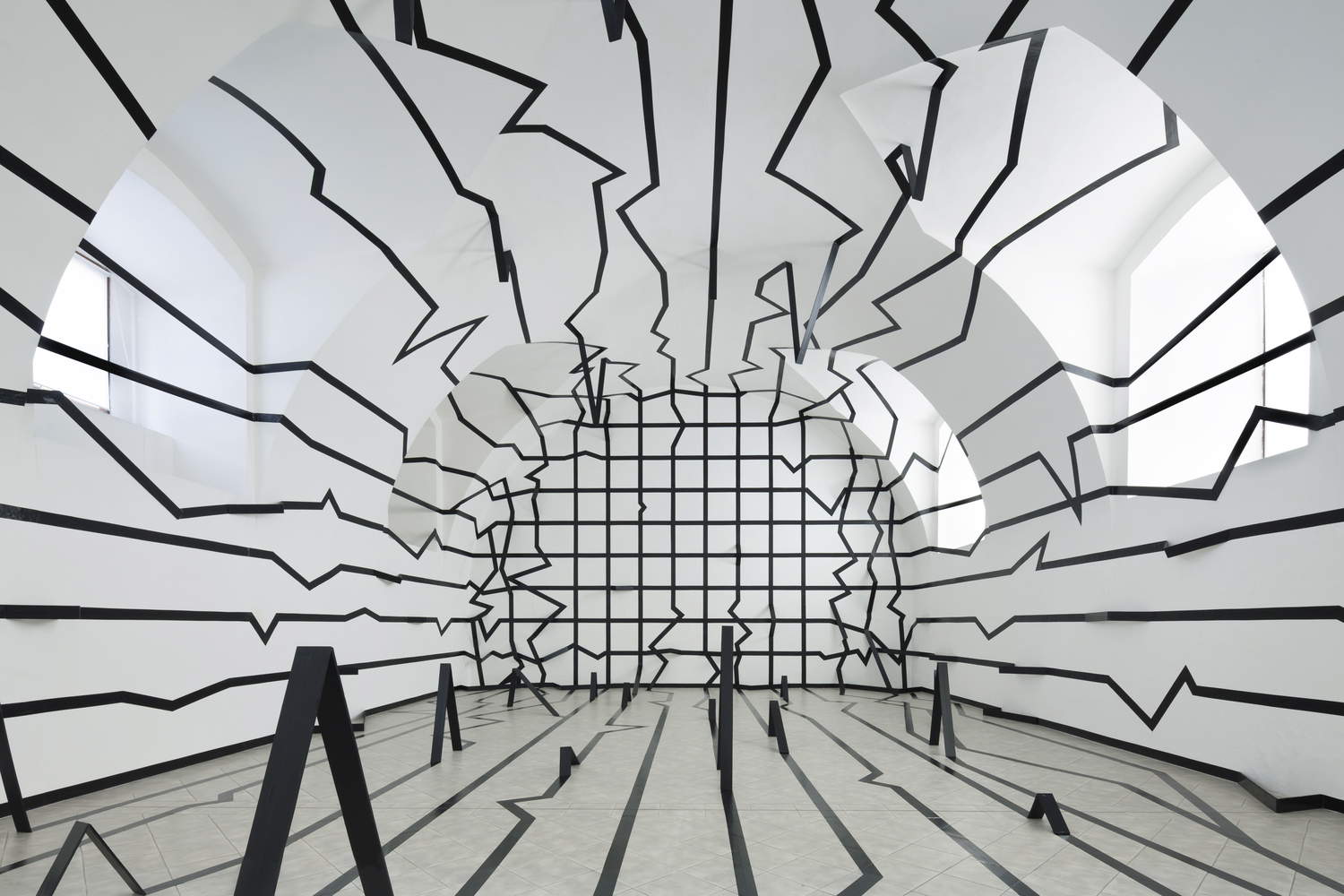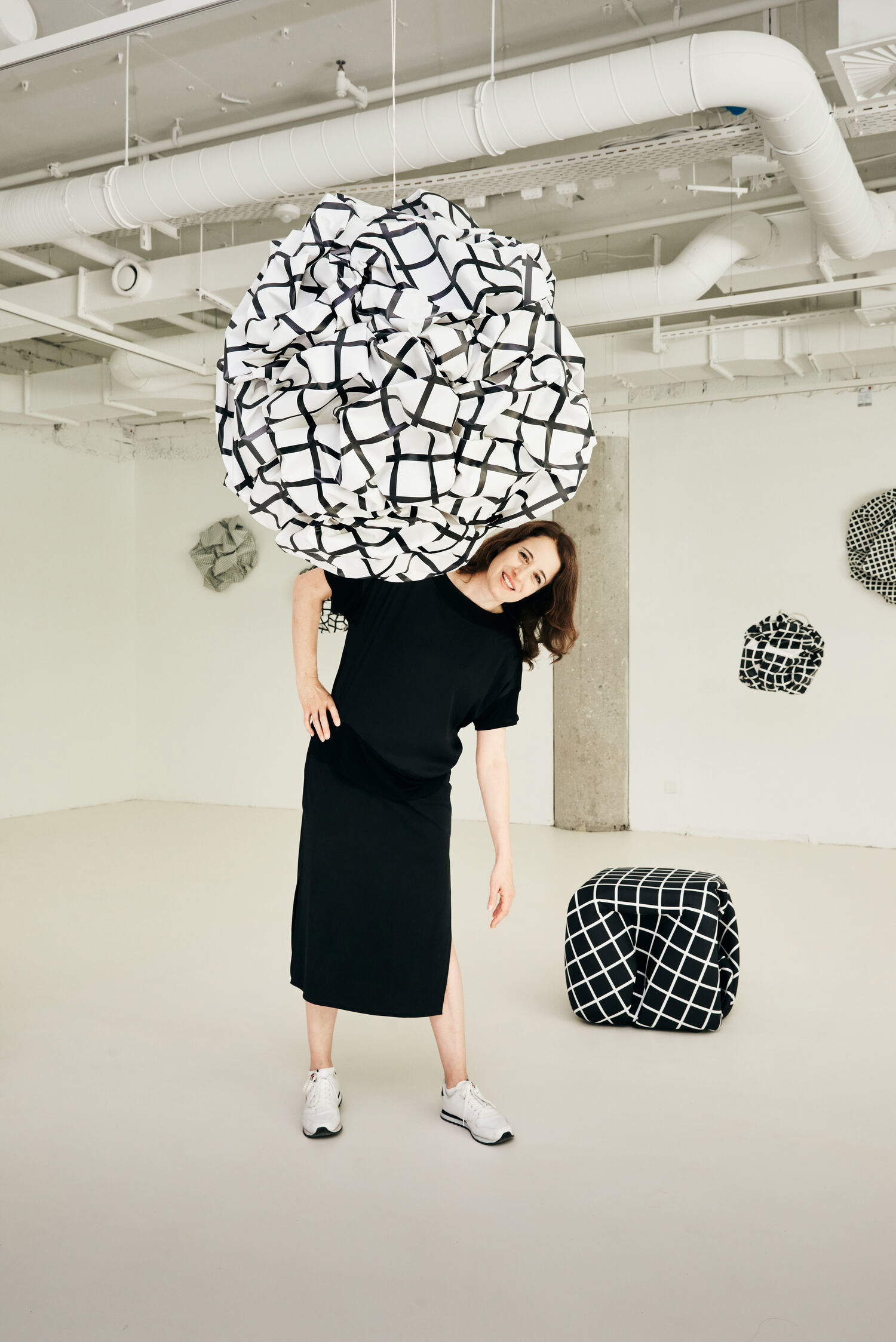From May 17 to September 28, 2025, the spaces of Tenuta Dello Scompiglio in Vorno (Capannori, Lucca) will host Analysis of Error, a solo exhibition by Esther Stocker (Silandro, 1974) curated by Angel Moya Garcia. The exhibition is part of a path consistent with the Austrian artist’s research, which for years has been investigating the tension between order and disorder, structure and deviation, system and rupture. On this occasion, the thematic focus is the concept of error, understood not as a sterile failure or negative mark, but as a possibility, a fruitful deviation, an opportunity to activate new dynamics of thought and perception.
The term error is explored in its broadest sense: as departure from a rule, as deviation from a code, as a form of freedom that escapes control. An error can be the violation of a rule, the failure of a plan, or the effect of a cognitive process that produces unexpected results. The exhibition develops from this concept, which becomes an engine of inquiry and visual form. Esther Stocker, known for her rigorous visual vocabulary grounded in black-and-white geometries, takes her own formal language and takes it further, disarticulating it through anomalies, distortions and misalignments that crack its apparent coherence.

The installation consists of two distinct but complementary environments. The first houses a series of paintings in which elements of visual disturbance emerge: minimal interferences, perceptual dislocations, barely noticeable irregularities that break symmetry and shift the center of vision. This is an anticipation of the installation work placed in the main space, where a large grid of black tape on a white background invades the room. The orthogonal lines, which at first glance seem to follow a logical order, instead generate an unstable system, in which the progressive loss of definition alters the reading of the space and forces the viewer to constantly renegotiate his or her position. The visitor finds himself immersed in a grid that simulates an absolute order but is actually traversed by minimal deviations, by formal uncertainties that trigger a short circuit between expectation and reality. Stocker’s visual construction presents itself as a closed system, but continuously subjected to centrifugal forces that open it up, destabilize it, and make it alive. The project is thus configured as a reflection on the relationship between norm and disorder, rule and freedom. The grid of black lines is the apparent container of a mathematical rationality, but its perfection is illusory. Every imperfection, every perceptual variation represents a conscious alteration, an interpretive possibility, a manifestation of the unexpected. The exhibition questions the very idea of objectivity, proposing a subjective reading of visual systems. Error, far from being a defect, is what allows thought to expand, to make new connections, to learn. In the pictorial works, the gesture becomes more collected but no less incisive. Here, too, Stocker introduces visual deviations, marks that crack the coherence of the repeated module. Variations occur as slight ruptures in a logic that is assumed to be unalterable. The artist plays with the tension between what is expected and what escapes, between the regularity of the system and its crisis. Painting then becomes a concentrated synthesis, a place where error is not hidden but highlighted, exposed in its generative function.
The entire exhibition develops as a dialogue between rationality and intuition. Geometries, seemingly cold and calculated, are crossed by an impulse that humanizes them, that makes them fallible. Mathematics and art meet on a common ground: that of experimentation. Precision is accepted only to be overcome, logic is opened to ambiguity, objectivity is confronted with doubt. The exhibition proposes a perceptual model that is not linear, not stable, but dynamic, open, available to contradiction. Error thus becomes a privileged field of observation for understanding the limits of traditional interpretive categories.


“In my paintings, sculptures and installations,” says the artist, “I try to depict the ambiguity and uncertainty of the system. I use the precision of u system to investigate the system itself. I try to release and abandon our ways of seeing understandings that are associated with the recognition of forms and that distinguish us from each other, sometimes unconsciously.”
Esther Stocker, born in Silandro in 1974, lives and works in Vienna. Her artistic practice is developed primarily through paintings and installations, two strongly interconnected languages, both rooted in an abstract, geometric aesthetic. His installations can be considered three-dimensional extensions of the paintings: environments constructed using exclusively black, gray and white, in which painting takes on a spatial form, bordering between sculpture and architecture. The artist constantly questions the perception of space, approaching it with a critical, contemporary and social gaze. At the center of his creative process is a rigorous mathematical elaboration, which forms the theoretical basis of his method. The core of her research revolves around the question “In what way is a perfect system actually imperfect?” The structures she builds are based on repetitive geometric modules that generate a visual order that is only apparently stable, to which interference, dissonance and anomalies are introduced that are capable of altering its rhythm. It is precisely in this tension between rule and deviation that the artist triggers an effect of surprise, shifting the optical balance and breaking the flat dimension with the intention of provoking a perceptual and emotional gap.

 |
| Esther Stocker at Tenuta Dello Scompiglio: a visual investigation of the concept of error |
Warning: the translation into English of the original Italian article was created using automatic tools. We undertake to review all articles, but we do not guarantee the total absence of inaccuracies in the translation due to the program. You can find the original by clicking on the ITA button. If you find any mistake,please contact us.